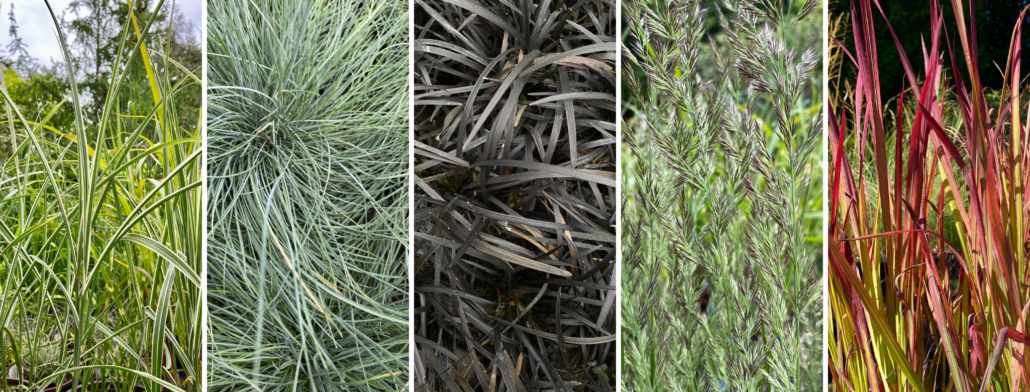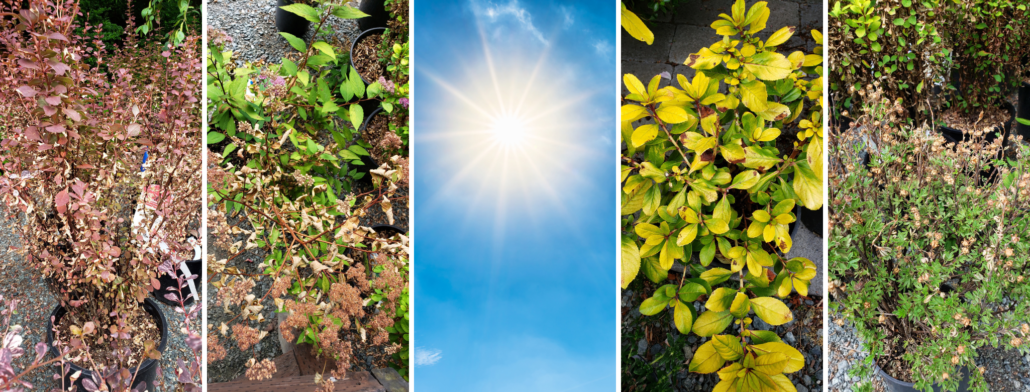
Winter on Whidbey Island can be hard. Short days, gray skies, and dormant plants can make for a gloomy garden. But your landscape doesn’t have to be all bare sticks and dark conifers! There are plants, shrubs, and trees that take a back seat all summer to showy perennials, just so they can shine in these colder months.
We’re offering a “Winter Interest Plants” class at the Nursery on Saturday, October 27 at 11:00 am. It will be a fun and informative showcase of plants that can bring joy and color to your winter garden! Register today by calling (360) 321-9931 or emailing olivia@ventureoutnursery.com
And if you can’t join us for the class, read on for an inspiring list of plants that bloom anywhere from November to February.
Winter-blooming herbaceous perennials
Hardy Cyclamen – Toxic to rabbits and deer. Leaves emerge in the fall and flowers bloom throughout winter. These tough, hardy plants will spread and colonize an area with time. Prefer very well-draining soils in shaded areas.
Hellebore – One of the first blooming plants in the New Year! Toxic to deer and rabbits. Prefer well-drained organic soils and filtered sun to shade. Hellebores are evergreen, but we recommend cutting the leaves off entirely by early January, before they flower. This will give the plants a fresh start and prevent any of last year’s mold or harmful bacteria from infecting the new blooms.
Winter-blooming Small Shrubs (4 to 6 feet)
Corylopsis Pauciflora aka “Buttercup Winter Hazel” – Fragrant yellow flowers. Grows to 6’ x 4’.
Winter Daphne – We have Daphne Odora “Marginata” in stock. Needs regular moisture and filtered sun. Fragrant, pale pink flowers continue from winter to early spring. Evergreen variegated leaves help to brighten shady spots. Grows to 4’ x 4’.
Mahonia x Media “Winter Sun” – An evergreen shrub with fragrant yellow flowers in late winter and spring, with dusty blue berries in summer. This tough plant can adapt to sun or shade, moist or dry, with time. Slow growing to 6’ x 5’.
Sarcoccoca – These are the small white flowers with a really BIG fragrance, appearing in late winter and early spring. Deer and rabbit resistant, it has evergreen, glossy leaves and is perfect for dry shade.
- S. Humilis “Sarsid 2” aka “Fragrant Valley” – Covered in small fragrant white flowers, it blooms for several weeks in late winter. Perfect for dry shade and very disease resistant. Grows to 15 inches high x 3 feet wide.
- S. Confusa “Shrubby Sweetbox” – Blooms late winter to early spring. Grows to 3’ x 5’.
- S. Ruscafolia – Blooms January and February. Grows to 4’ x 6’.
Red Flowering Currant (native) – One of the first blooms for hummingbirds in early spring. Attractive cascades of red to pink flowers. Grows to 6’ x 5’.
Winter-blooming Large Shrubs (6 to 12 feet)
Witch Hazel – Large green leaves appear in spring and summer, taking a back seat to other showier garden plants. But in the fall, a riot of reds, oranges, and yellows spread throughout the leaves, and then in late winter, fragrant blossoms appear on the bare branches.
- Hamamelis x “Diane” – Mildly fragrant orangey-red flowers. Grows to 12’ x 12’.
- Hamamelis x Intermedia “Jelena” – Colorful fall foliage followed by coppery-orange blooms. Grows to 8’ x 12’.
- Hamamelis x Intermedia “Arnold Promise” – One of the best for year-round color. Yellow flowers bloom profusely, and they have a delicious scent! Grows to 12’ x 12’.
- Hamamelis x Intermedia “Sunburst” – By far the brightest yellow flowers of any witch hazel. Grows to 12’ x 12’.
Camellia Sasanqua – Blooms in fall and winter, while other camelias bloom in spring. Glossy evergreen foliage can make an attractive informal hedge or privacy screen. Can grow well under large, established trees, but needs at least some filtered sunlight.
- “Yuletide” – Red flowers with a yellow center bloom near Christmas, as the name suggests. Bush has an upright habit. Grows to 8’ x 10’.
- “Kraemer’s Supreme” – Has large, double-petaled red flowers, reminiscent of Peony blooms. More shade tolerant than the other two varieties. Grows to 6’ x 8’.
- “Setsugekka” – Ruffled white flowers with yellow centers. Bush has a semi-weeping habit and can be espaliered. Grows to 8’ x 10’.
Winter Jasmine – Jasmine Nudiflorum – Small white flowers in January are scentless, as opposed to other, more fragrant types of Jasmine. This evergreen plant can be described as a “scrambling shrub,” rather than a vine, because it can grow up to 15 feet tall with support, or just 4’ x 7’ on its own.
Stachyurus Chimensis “Joy Forever” – Long, lacey, pale yellow flower buds appear on bare branches of this deciduous shrub in late winter. Variegated foliage is green with creamy edges in the summer, changing to bronze in fall. Likes acidic soil. Grows to 6’ x 10’.
Stop by the Nursery to peruse our selection, or give us a call at (360) 321-9931 for more information!
Written by Olivia Round.



